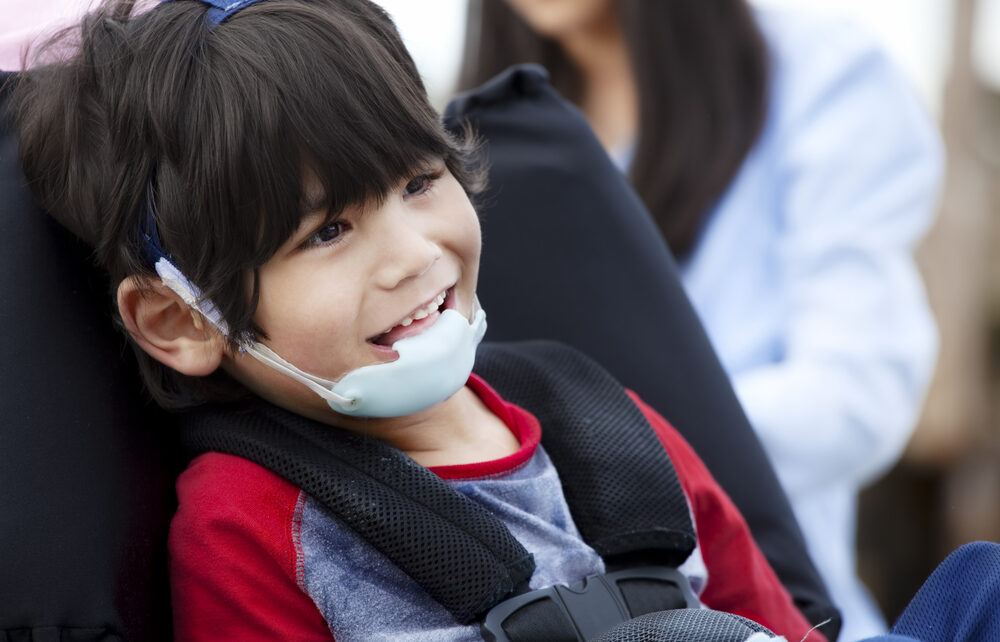Navigating the Initial Shock and Grief
The onset of a birth injury can plunge a family into a state of shock and profound grief. This period is marked by a whirlwind of emotions, from disbelief and confusion to intense sorrow and fear for the future. It is a critical time when the family must navigate a new reality, often feeling overwhelmed and isolated.
To move through this initial phase, families may find solace and direction by:
- Allowing themselves to feel the full spectrum of emotions without judgment.
- Seeking immediate support from friends, family, or professionals who can provide a listening ear and practical assistance.
- Establishing a routine that brings a sense of normalcy, even in small ways, to help manage the chaos.
It is essential for families to recognize that grief is not a linear process and that it’s okay to seek help. Professional counseling or joining a support group can offer a safe space to share experiences and learn coping strategies. As time progresses, the intensity of initial emotions will likely ebb, paving the way for healing and adaptation.
Supporting Siblings Through the Emotional Aftermath
When a family is affected by a birth injury, the emotional toll extends beyond the parents to the siblings, who may also face significant mental health challenges. The loss or trauma of a newborn sibling can leave brothers and sisters grappling with feelings of isolation, confusion, and grief, often feeling overshadowed by the intense focus on the parents’ sorrow.
To support siblings in these trying times, it is crucial to acknowledge their unique experience and provide them with the attention and care they need. Here are some ways to help:
- Recognize Their Feelings: Validate siblings’ emotions by acknowledging their sadness, fear, or anger as natural responses to the situation.
- Encourage Communication: Create a safe space for siblings to express their thoughts and feelings without judgment.
- Include Them in the Process: Involve siblings in discussions and decisions about the injured child’s care, as appropriate, to help them feel connected and important.
- Seek Professional Help: Consider counseling or therapy for siblings to help them navigate their complex emotions in a supportive environment.
Friends, family, and extended relatives can play a supportive role by offering a listening ear and practical assistance with day-to-day tasks, thus easing the siblings’ burden. Their presence can serve as a reminder that the siblings are not alone in their journey through grief and healing.
The Role of Extended Family in the Healing Process
The extended family’s involvement in the aftermath of a birth injury can be a cornerstone of emotional support and practical assistance. As parents and siblings grapple with complex emotions and the day-to-day challenges that arise, the extended family can step in to provide a listening ear, a comforting presence, and hands-on help with daily tasks. This support network is invaluable, offering solace in the knowledge that the family is not facing this journey alone.
Extended family members themselves may experience a profound sense of loss and helplessness, mourning the envisioned future of the child and confronting their own sorrow. It is essential for them to find a balance between offering support and managing their grief. Here are some ways extended family can contribute to the healing process:
- Providing emotional support through active listening and empathy.
- Assisting with household chores, childcare, and other practical needs.
- Encouraging parents to seek professional help when needed, such as couple or family therapy.
- Creating safe spaces for open communication and shared feelings.
By being present and offering both emotional and practical support, extended family members play a pivotal role in the family’s journey towards healing and recovery.
Strategies for Emotional Healing and Mental Well-being
Recognizing and Addressing Anxiety and Depression
For families grappling with the aftermath of birth injuries, recognizing and addressing mental health issues such as anxiety and depression is crucial. These conditions can silently affect parents and caregivers, often exacerbated by the stress and demands of managing their child’s needs.
- Identify the signs: Early recognition of symptoms like persistent sadness, loss of interest, or excessive worry is the first step towards seeking help.
- Seek professional help: Consulting with mental health professionals can provide tailored strategies for coping and recovery.
- Build a support system: Leaning on friends, family, or support groups can offer emotional relief and practical assistance.
It’s important to remember that these emotional challenges are common and that resources are available. A comprehensive [website provides information and support](#) for families dealing with birth injuries, including FAQs, financial aid options, legal help, and resources for conditions like cerebral palsy and Erb’s palsy. By taking proactive steps and utilizing available support, families can navigate the complex emotional landscape that accompanies birth injuries.
The Importance of Patience and Self-Compassion in Recovery
The journey to recovery from birth injuries is often long and winding, marked by an unpredictable mix of progress and setbacks. Patience becomes a crucial virtue during this time, as healing does not adhere to a predetermined timeline. Families are encouraged to embrace each small victory, understanding that every positive step, no matter how minor it may seem, is a stride toward overall recovery.
Self-compassion is equally important, serving as a gentle reminder that it’s okay to experience a range of emotions and to have days that are more challenging than others. It’s essential to:
- Acknowledge and accept feelings without judgment.
- Recognize personal limits and set realistic expectations.
- Celebrate even the smallest of achievements on the path to recovery.
Asking for help is a sign of strength, not weakness. Engaging in therapy, practicing self-care, and leaning on a robust support network can significantly enhance the healing process. It’s about taking one day at a time, with the understanding that patience, self-compassion, and support pave the way to empowerment and a regained sense of control over one’s life.
Finding Strength in Support Groups and Shared Experiences
For families grappling with the aftermath of birth injuries, finding solace in shared experiences can be a cornerstone of emotional recovery. Support groups offer a unique space where individuals can connect with others who truly understand the complexities of their situation. These groups serve as a platform for exchanging stories, offering mutual support, and fostering a sense of community that can be instrumental in the healing process.
- Shared Understanding: In support groups, there’s an inherent understanding that goes beyond words. Members often find comfort in the silent acknowledgment of their shared struggles.
- Exchange of Resources: These groups can also be a hub for resources, where families can learn about new coping strategies, medical insights, and practical tips from those who have walked a similar path.
- Empowerment through Empathy: The empathy found within these communities empowers members, providing the emotional fortitude to face ongoing challenges.
Engaging with these groups, whether through formal counseling services or informal community meet-ups, can lead to personal development and a strengthened resolve to navigate the journey ahead. Practicing relaxation techniques like deep breathing or meditation within these groups can amplify their benefits, actively improving mental well-being. Ultimately, the collective wisdom and support found in these circles can be a guiding light towards resilience and recovery.
Navigating Treatment and Support Options
Exploring Physical Therapy and Rehabilitation Services
Physical therapy emerges as a vital element in the recovery process for families dealing with birth injuries. It aims to restore mobility and reduce pain by focusing on areas affected by the injury. Tailored treatment plans are developed to address the unique challenges each individual faces, ranging from minor impairments to more severe conditions.
Rehabilitation services often include a variety of techniques such as physiotherapy and spinal manipulation. These methods are not only instrumental in improving movement but also play a crucial role in alleviating discomfort. The journey through physical therapy is marked by milestones, and each achievement is a step towards regaining independence and quality of life.
For children with conditions like cerebral palsy, specialized therapies are available that leverage their strengths to achieve personal potential. These innovative approaches are coupled with compassion and support, paving the way for significant breakthroughs. Families are encouraged to explore these options, which may include:
- Tailored physiotherapy sessions
- Spinal manipulation techniques
- Strength and mobility exercises
- Personalized treatment plans
It’s important to note that physical therapy is often part of a broader recovery strategy that may also involve pain management and alternative therapies. The goal is to regain lost functionality and improve overall well-being without immediate resort to invasive procedures. As families navigate this path, they find that physical therapy not only aids in recovery but also empowers them with the tools to manage the challenges of birth injuries.
The Benefits of Chiropractic Care for Coping with Trauma
Chiropractic care has emerged as a complementary treatment for those coping with the aftermath of trauma, including birth injuries. It offers a non-invasive option that focuses on the manual adjustment of the body’s alignment, which can be particularly beneficial for soft tissue injuries. This approach is often sought after when traditional medical treatments do not fully alleviate discomfort.
- Pain Management: Chiropractic care provides alternative pain management strategies that do not rely solely on medication.
- Body Realignment: Manual adjustments help realign body structures that may have been affected during the traumatic event.
- Holistic Healing: Beyond addressing physical ailments, chiropractic care can contribute to overall well-being and mental health.
Incorporating relaxation techniques and engaging with supportive communities are also vital in supporting mental well-being during recovery. These practices can help improve mental states and foster resilience, complementing the physical benefits of chiropractic treatments.
Pain Management and Alternative Therapies
For families grappling with the aftermath of birth injuries, managing pain is a critical component of the healing journey. Beyond conventional medicine, there is a spectrum of alternative therapies that can offer relief and aid in recovery. Acupuncture, for instance, is renowned for its effectiveness in alleviating pain associated with traumatic injuries, and is increasingly being integrated into holistic recovery plans.
In addition to acupuncture, other non-pharmacological strategies are gaining traction. These include:
- Meditation and mindfulness practices to reduce stress and anxiety
- Yoga and gentle stretching to improve mobility and reduce discomfort
- Biofeedback to enhance control over bodily processes that are typically involuntary
Each of these approaches can be tailored to the individual’s needs and preferences, often in collaboration with healthcare professionals. It’s important to remember that while these therapies can be beneficial, they should complement, not replace, the guidance of medical experts.
Maintaining mental well-being is as crucial as addressing physical pain. Techniques such as meditation not only assist in managing stress but also bolster overall mental health. This dual focus on mind and body is essential for a holistic recovery, providing a beacon of hope for families on the path to healing.
The Role of Self-Care in Coping with Birth Injuries
Avoiding the Pitfalls of Neglecting Self-Care
In the wake of a birth injury, the importance of self-care for parents cannot be overstated. It is a critical component of the healing process, yet it is often overlooked in the chaos of medical appointments and caregiving responsibilities. Self-care is not a luxury; it is a necessity that sustains the emotional and physical stamina needed to support your child.
- Prioritize daily self-care rituals: Simple acts like taking a shower, enjoying a cup of tea, or stepping outside for fresh air can be profoundly restorative.
- Set realistic boundaries: It’s essential to recognize your limits and communicate them to others. This helps prevent burnout and ensures you have the energy to care for your child.
- Celebrate small victories: Acknowledge and celebrate the progress you and your family make, no matter how small. This fosters a positive mindset and helps maintain momentum in the recovery journey.
By integrating these practices into your routine, you can fight against the potential neglect of your well-being. Remember, taking care of yourself is not selfish; it is an integral part of taking care of your family.
Overcoming the Tendency to Compare with Other Families
In the wake of a birth injury, families may find themselves inadvertently comparing their situation to others, which can exacerbate feelings of inadequacy and isolation. It is crucial to acknowledge that each family’s journey is unique, and healing is not a competition. Here are some steps to help avoid the pitfalls of comparison:
- Recognize the individuality of your experience. Your family’s path to coping and recovery will differ from others, and that’s okay.
- Celebrate small victories. Focus on the progress your family and child are making, no matter how incremental it may seem.
- Limit exposure to social media and other platforms that may trigger comparison. Instead, seek out stories that inspire and provide hope.
- Engage in open communication with your partner and support network about feelings of comparison to reinforce a united front.
By centering on your family’s unique strengths and milestones, you can foster a more positive and self-compassionate approach to healing. Remember, the goal is to find a path forward that works for your family, without the added pressure of measuring up to external expectations or experiences.
Incorporating Routine Self-Care Practices for Emotional Resilience
For families grappling with the aftermath of birth injuries, establishing a routine of self-care practices is essential for fostering emotional resilience. These routines can serve as anchors, providing stability and a sense of normalcy amidst the chaos of medical appointments and therapy sessions.
Key self-care strategies include:
- Setting Boundaries: It’s important to recognize personal limits and communicate them to others. This helps in maintaining a balance between caregiving and personal well-being.
- Celebrating Personal Accomplishments: Acknowledging even the smallest victories can boost morale and encourage continued progress.
- Relaxation Techniques: Practices such as deep breathing, meditation, or gentle yoga can reduce stress and improve mental health.
- Engaging with Supportive Communities: Finding strength in numbers by connecting with support groups or therapy sessions allows for shared experiences and collective healing.
Incorporating these practices into daily life not only aids in managing the emotional toll of birth injuries but also empowers individuals to reclaim control over their well-being. It is a journey of healing that requires patience, self-compassion, and the courage to seek support when needed.
Building a Supportive Care Network
Collaborating with Healthcare and Mental Health Professionals
Building a strong collaborative relationship with healthcare and mental health professionals is a cornerstone in the journey of coping with birth injuries. These experts serve as compassionate guides, offering invaluable expertise and understanding during one of the most challenging times for families. By working closely with obstetricians, midwives, neonatologists, paediatricians, therapists, and counsellors, families can ensure a coordinated approach to care that addresses both the physical and emotional needs of the affected individuals.
Key aspects of this collaboration include:
- Comprehensive support: Coordination between various healthcare providers and mental health specialists is essential for providing holistic care.
- Involvement of family: Encouraging the participation of partners and other family members can foster a nurturing environment that promotes healing and bonding.
- Empathetic care: Healthcare professionals offer compassionate care that helps families feel seen, heard, and supported, which is vital for emotional well-being.
Remember, you are not alone on this path to recovery. Mental health partners are here to assist you, ensuring that you have the support you need to navigate the complexities of this emotional journey.
Engaging Partners and Family in the Recovery Journey
The recovery journey from birth injuries is not a solitary path. It is a collaborative effort that involves the active participation of partners and family members. Their engagement is pivotal in creating a nurturing and supportive environment that can significantly enhance the healing process.
- Collaboration: Encouraging open communication and cooperation among all family members can help ensure that the needs of the affected individual are met comprehensively.
- Education: Providing education to partners and family about the nature of the injury and the expected recovery trajectory can empower them to offer more effective support.
- Emotional Support: Partners and family can offer a unique form of emotional support that is essential for mental well-being. This includes being present, listening, and validating feelings.
By integrating partners and family into the recovery process, not only does the individual benefit, but the family unit as a whole can grow stronger and more resilient. This collective approach can lead to a more harmonious and supportive recovery environment, fostering hope and positivity amidst the challenges.
Creating a Community of Support for Long-Term Healing
The journey towards healing after a birth injury is not one to be walked alone. Establishing a community of support is essential for long-term recovery and resilience. This community can provide a network of emotional, practical, and informational support that is tailored to optimize healing while minimizing the risk of future complications.
Key elements of creating a supportive community include:
- Fostering Safe Spaces: It is crucial to create environments where families can share their experiences and emotions without fear of judgment. These sanctuaries are vital for expressing grief and finding mutual understanding.
- Accessing Supportive Resources: Utilizing platforms like TimeToBetter can be a step towards connecting with others who are on similar paths of recovery. These resources offer guidance and the reassurance that one is not alone in their journey.
- Encouraging Personal Development: Recovery is also a time for personal growth. As individuals navigate through their healing process, they embark on a path of development and enlightenment, learning to set boundaries, celebrate personal victories, and seek informed guidance.
- Building a Strong Support System: The importance of a robust support network cannot be overstated. Whether it’s through therapy, self-care practices, or social media connections, having a circle of support can significantly aid in regaining a sense of control and empowerment.





